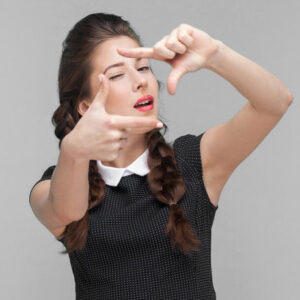By Dr. Ken Broda Bahm:

This past Friday, eight people died at a music festival in Houston, crushed by a crowd as the music continued and security was unable to help. As the tragedy moves toward litigation, it is likely that this will be another case where there is a profusion of video, with dozens or perhaps hundreds of clips, each showing their own perspective. During the trial last Spring in a police violence case, I was asked to do a media interview on that unique factor in the trial. In that case, there were several recordings from both security cameras and witnesses, and jurors were exposed to a variety of views, each carrying their own focus, angle, and framing on the incident. The question for me, according to the interviewer, was how these varying perspectives would matter to jurors, and whether there is a “perspective bias,” that could attach to any given video.
It is an interesting question, and I did the interview. But as reporters are apt to do, they only used one line from me, and it was on a different topic. So cleaning out some old notes over the weekend, however, I found my preparation for that interview, and it occurs to me that these thoughts could be useful to share. Perspective bias matters not just to jurors, but really to anyone who uses cameras for communication. These days, with the persistence of remote meetings, that means just about everyone. So here are my general thoughts based on the questions I received from the interviewer.
What is Camera Perspective Bias?
The camera creates the illusion that we are seeing things neutrally, as they are. But the angle and the selectivity of the camera highlights some things more than others.
What Effect Does Angle and Lighting Have on Perception?
Here are a few examples on the effect of perspective. We know that looking up at someone conveys that they have authority and control over us, and looking down conveys the opposite. An overhead view (sometimes called “God’s eye view”) creates feelings of greater foreseeability and control. For example, an auto accident reconstruction done this way will appear to be more controllable and avoidable (Fessel & Roese, 2011). Police body cam footage also tends to lower attributed intent, because it omits the filming officer (Turner, Caruso, Dilich & Roese, 2019).
Why Does Camera Perspective Bias Matter? Who Does It Affect, and How, and Why?
It matters because, like all biases, it can influence our perceptions without us knowing it. When prosecutors, jurors and the public look at a video, we feel like it is showing us all what needs to be seen. Viewing the scene from multiple perspectives, or viewing in a way that accounts for the effects of perspective, can help to correct that bias by increasing awareness of these influences.
How Could Two People Look at The Same Thing and See Something Totally Different?
Because we all have brains which, by design, act to filter our experiences. Seeing what we are primed to see, or what we expect or hope to see, can color not just the perception, but also the interpretation that we place on that perception.
What Research Has Been Done About Camera Perspective Bias as It Relates to Witness Testimony or Videotaping?
There has been relatively little research on this, and now that we are in the “Zoom Age,” we need more. But there is some research. For example, one study (Dominic, Jarman, & Lytle, 2015) showed no difference whether a witness looked at the camera or looked at an attorney seated near a camera.
In practice, however, we know that a witness who is well lit, appropriately framed, comfortable, and confident will come across as more credible and more likeable than a witness who is filmed in poor conditions. While research is needed to explain the precise parameters of that, I think we can trust that this basic experience will be borne out by study.
What’s One Key Thing We Need to Remember or Know When It Comes to Videotaped Eyewitness Accounts? For Example, Doesn’t the Video Show Everything? Is More Evidence Needed, Or Isn’t the Video Enough?
The video is part of the overall picture, and in some cases a very important part. But just as with every other type of evidence, it helps for factfinders and for the public to be critical consumers of information. Consider your perspective and ask yourself whether there is any incompleteness or bias in that perspective.
Thanks for reading. I am a litigation consultant (bio here) specializing in mock trial research, witness preparation, jury selection, and case strategy, generally (but not always) in high-value civil cases. If you have a comment, a request for a future topic, or a concern about a current area of litigation, or a question about your own case, contact me now.
Other Posts on Cameras:
- Don’t Assume the Camera Is Neutral
- Before Your Next Web-Conference, Fix Your Camera Position
- Remember that the Camera Has a Bias
Dominic, C., Jarman, J. W., & Lytle, J. M. (2015). Does deposition video camera angle affect witness credibility. Jury Expert, 27, 7.
Fessel, F., & Roese, N. J. (2011). Hindsight bias, visual aids, and legal decision making: Timing is everything. Social and Personality Psychology Compass, 5(4), 180-193.
Turner, B. L., Caruso, E. M., Dilich, M. A., & Roese, N. J. (2019). Body camera footage leads to lower judgments of intent than dash camera footage. Proceedings of the National Academy of Sciences, 116(4), 1201-1206.
Image credit: 123rf.com, used under license